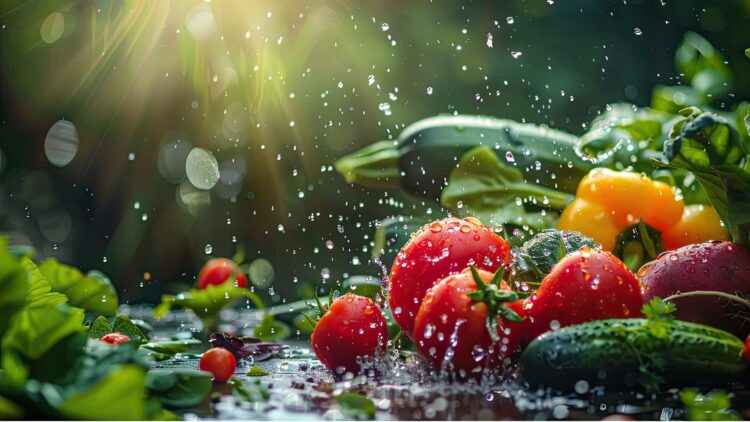While fruits and vegetables are really good for your health, it can be dangerous to consume them without washing, after all they can be full of pesticides, other chemicals, or just dirt and animal waste from their time in the ground. That is why it is important to know how to wash them properly to avoid contamination or illness. While some can be quite easy to wash, like oranges or other fruits with peels, leafy greens can be a bit more complicated, and the one thing you should never do is use soap, so, what technique should you be using to wash your greens?
Researchers from the Colorado State University have the answer, and it is a lot simpler than expected. While getting rid of bacteria and pesticide traces is important, most of it can be removed by just using water and friction. While this can apply to almost all greens, it is especially true for leafy greens like lettuce, spinach, or kale. But while it is the easiest way to do it (and you really should, as there have been many cases of E.coli because of improperly washed lettuce) there are other ways that also work and that depend on the type of fruit or vegetables that you are attempting to keep clean.
How to wash your vegetables, especially leafy greens the right way
Like we have said, leafy greens can be quite hard to wash properly, as they have multiple nooks and crannies were dirt and other substances can get trapped, making the process a lot harder than it needs to be. The most important thing you can do is separate every single leaf you plan on consuming fully and clean them all. Just rinsing the outer layers will not give you the desired effect. If any leaves are bruised or damaged, discard them, as this could mean that they are more likely to hold more contaminants.
The washing process itself is easy, just fill a big bowl with water and submerge the leaves while moving them around to dislodge dirt. If you feel like they need to be cleaner, add a splash of vinegar, about half a cup per cup of water, and then rinse again with clean water. Never use soap, bleach, or detergent, as leafy greens are porous and will absorb these substances that are not safe for consumption.
As a last tip for safety when washing leafy greens, always remember to get the leaves out of the water instead of dumping the water through them when you are done. This will help keep any dirt that was in them at the bottom of the bowl and not re contaminate them again. To dry them either spread them on a towel or use a salad spinner. This will make sure that they stay crispy for longer.
But leafy greens are not the only fruit and vegetable that needs to be cleaned, although they might be the hardest, there are many other types and they each have their own special tricks:
- Firm fruits and vegetables (apples, cucumbers, zucchini): Hold under running water and rub thoroughly with your hands. If there’s a waxy film, it’s often best to remove the skin.
- Root vegetables (carrots, potatoes, beets): Use a stiff-bristled brush and lukewarm water to scrub away dirt and any lingering residues from the surface.
- Melons: Clean the outer rind with a brush before slicing to avoid dragging surface bacteria into the fruit as you cut.
- Berries and grapes: Give a gentle rinse in cool water right before eating. Washing too early can shorten shelf life and lead to spoilage.
- Mushrooms: Wipe down with a damp towel or use a soft brush to remove debris. Avoid soaking them, as too much moisture affects texture.
- Fresh herbs: Place in a bowl of clean water, swish gently, then lay on a towel or pat dry to remove excess moisture.

